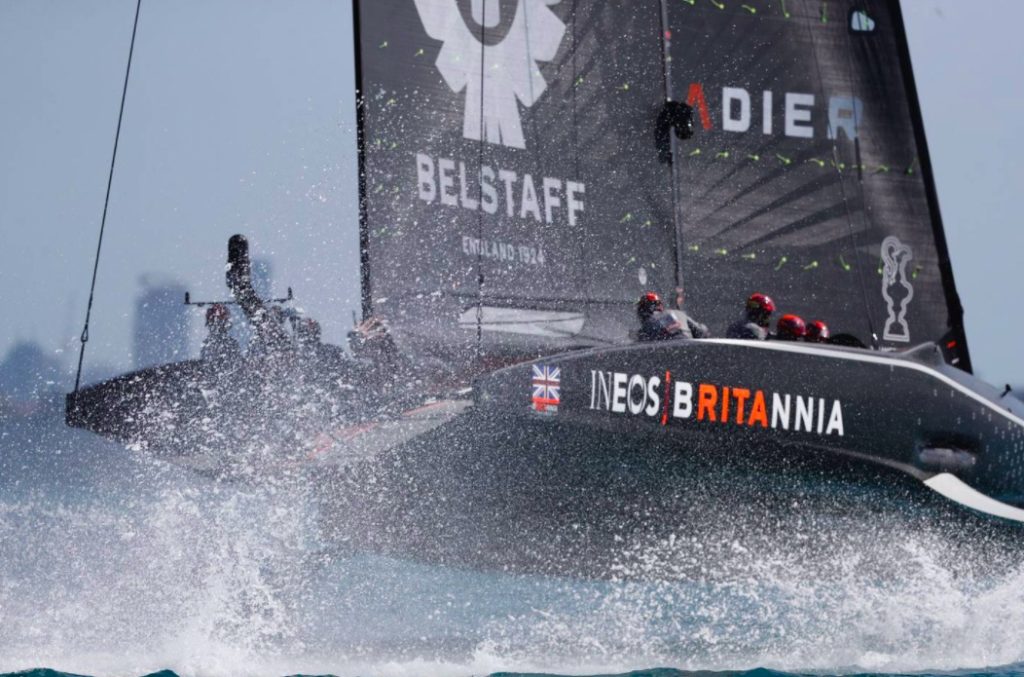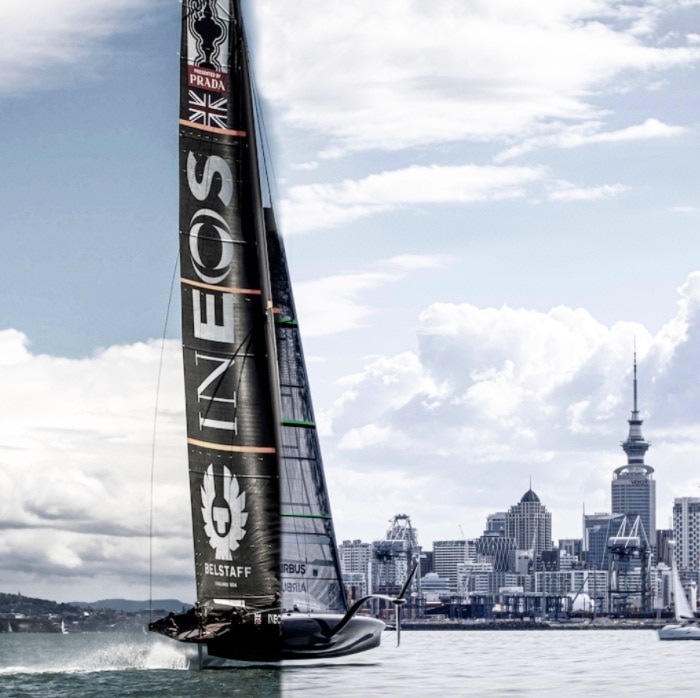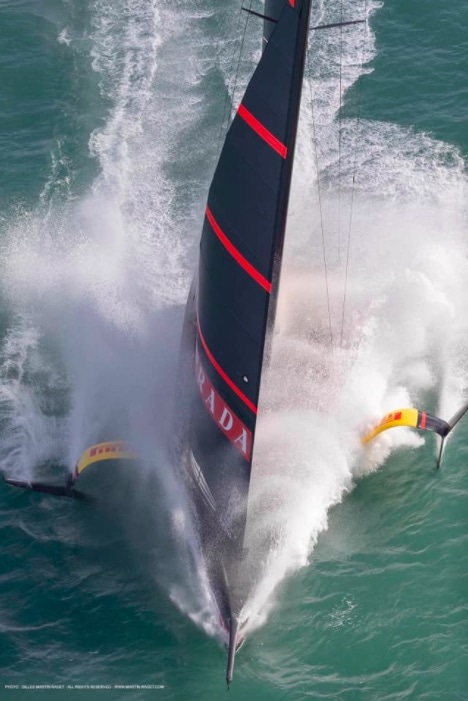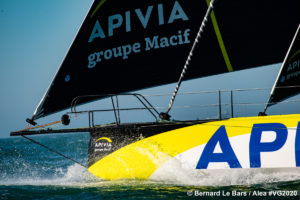Is Ineos Team UK’s boat problem getting worse?

Even though Ineos Team UK has hit back after its new America’s Cup boat was slammed in a brutal blog post telling The Herald that its main concerns centres around a ‘small hydraulics problem’, the British team pulled out again today, this time from a scheduled trial race this morning.
The mysterious problems plaguing Ineos and its unresolved issues are fast becoming the most intriguing story in the build-up to the America’s Cup World Series, says The Herald.
The paper reports that Ineos Team UK commenced the pre-start manoeuvres against Emirates Team New Zealand, but pulled the pin in less than two minutes.
A less sinister interpretation of events was put forward. The “Brits fell off the foil and couldn’t get back up again,” says Live Sail Die.
“Under 8 knots it seems really sticky and there are a few teams struggling to get their boats out of the water.
“Ineos were really struggling. I don’t think I saw them do a successful tack or gybe today, certainly not in the racing which will be very disappointing for them. Whether they had some issues, who knows?”
The British boat, which is backed by the largest single sponsorship in sailing history, headed back to its Viaduct harbour base under tow.

It means the British team have only one more chance to complete a trial race (Tuesday) before Thursday’s World Series start.
Britannia was worked on after damaging its mast and missing the first two days of practice racing last week ahead of the World Series and Christmas Cup regattas, with an online commentator calling it “a lemon loaded with bananas”.
“The challengers are all hidden up in their sheds, working desperately to try to get better performance so the humiliation won’t be so bad next week. ‘Tired’? ‘mast problems’? No, it is all about speed and changing bits,” says another.
Blogger Magnus Wheatley expressed his disappointment that the Ineos boat appeared “at least two clicks slower around a racecourse”, before launching an attack on the syndicate late last week.
Wheatley claimed he had been hearing a “discord in the team with morale at rock bottom.
“Well, imagine how you’d feel if you’d just blown £120m of someone else’s money and have an absolutely balls-out racing machine laden with some of the best sailors on the planet, a supercomputer or two to measure a billion points of data a day and you’re still way off the pace,” Wheatley wrote.
“The first time you take it to a racecourse, it breaks. You then scuttle back to base, close the doors and silently weep.
“The management are all at each other’s throats and the billionaire owner is breathing, heavily, down your neck … it’s depressing.
“Well, that’s what’s happening in New Zealand right now with Ratty’s Rita (Ainslie’s boat) looking like the lamest of lame ducks and the rest of the fleet and commentators dumbfounded as to where it has all gone wrong.”
The internet is full of suggestions, one of which being that Ineos is in “desperation” because of “design short falls. The killer for Ineos is HOW is ETNZ [Emirates Team New Zealand] carrying bigger sails than Ineos in the same wind? The Brits are in trouble.”
The warm-up races begin on December 17, when Ineos Team UK, Emirates Team New Zealand, Luna Rossa Prada Pirelli Team and American Magic will all be racing AC75s.
AC75s are 75ft foiling monohulls weighing around seven tonnes. They can reach speeds of around 60 miles per hour.
“We use the same technology as an aircraft but our wings, or hydrofoils, are under the water,” David ‘Freddie’ Carr, of Ineos told Sky Sports.
“As an aeroplane would use the wind moving over the wings to generate lift, we use water over the hydrofoil to release the hull and get the boat out of the water. The design and shape of the hydrofoil is key to the boat’s performance.
“You are doing 50 knots across the water, supported by something the size of an ironing board which is keeping you foiling. When you put it like that, it’s absolute nonsense really, isn’t it? But, it’s good fun.
“Britannia can reach speeds of 50 knots (60 mph). Those speeds are fast for power boats, and until now, unheard of for sailing boats and there are no engines in sight.
“Foiling is what has allowed us to make this quantum leap in speed; by reducing the contact surface with the water the drag is hugely reduced.
“Our 87ft main sail provides the thrust to get us going,” says Carr. “It uses forces in the same way as an aeroplane would, but it’s stood upright.
“The wind passing over it provides the forward motion and when the boat reaches speeds for around 14 knots, the hydrofoils kick into action and foiling occurs.”

The style of boat was selected for this America’s Cup campaign by the defender Emirates Team New Zealand alongside the Challenger of Record, Luna Rossa Prada Pirelli Team.
The fact that the winner of the last cup, leads the creation of the rules and parameters for the next, is a unique part of the America’s Cup competition.
“We’re on short courses with boundaries so you can see the field of play. It’s very obvious what’s going on. The racing is super close. The boats are doing 50 mph – it’s unbelievable. It will blow people’s minds,” says Carr.
Carr didn’t comment on the current challenges facing the team and its non-attendance at practice, although he did enthuse about what could be possible.
“It’s about the top end speed and how early you can pop out of the water,” says Carr.
“You’ve got to go out and push the limits and see where that boat can get to, but if you do that before the Prada Cup, and the new year, you could sustain damage that will affect your whole four years of work. There is a fine line, particularly in the windy stuff, but you’ve got to find which bits of the kit are weak, as we have done, and which are going to let you down,” he says alluding to the current concerns.
“It’s about trying to look after your assets.
“Everybody is showing about – probably – 90 per cent of their boat speed at the moment. There’s no doubt that all four teams will slowly implement ‘up’ towards the middle of January where they’ll be operating at 100 per cent.
“The racing we’ll see next week will be at 90-95 per cent,” he says, but this morning’s effort was singularly at the other end of the scale.











Time to think outside the box so to speak. So back to basics lads. Instead of large quite lets say ‘masculine’ foils to help lift her out of the water, which incidentally is draggy and triangular, how about blatantly copying the route taken by the fastest team……the defenders.
Their foils are as near as damn it horizontal, and narrow. More to the point they just look right, almost ‘feminine.’ At low speeds it is impossible to escape the ‘NZ’ thinking. Low drag, get a bit of speed up, and let the beautiful foils produce the necessary lift.
Let us compare the outride top speeds of the AC75’s. Three teams around 48 knots and ‘The Brits’ at say 42…..the big, triangular shape and therefore largest surface area of the foils hold her back. At very high speeds, unimaginable even a couple of years ago, the drag coefficient is exponential, and every tenth is very hard won.